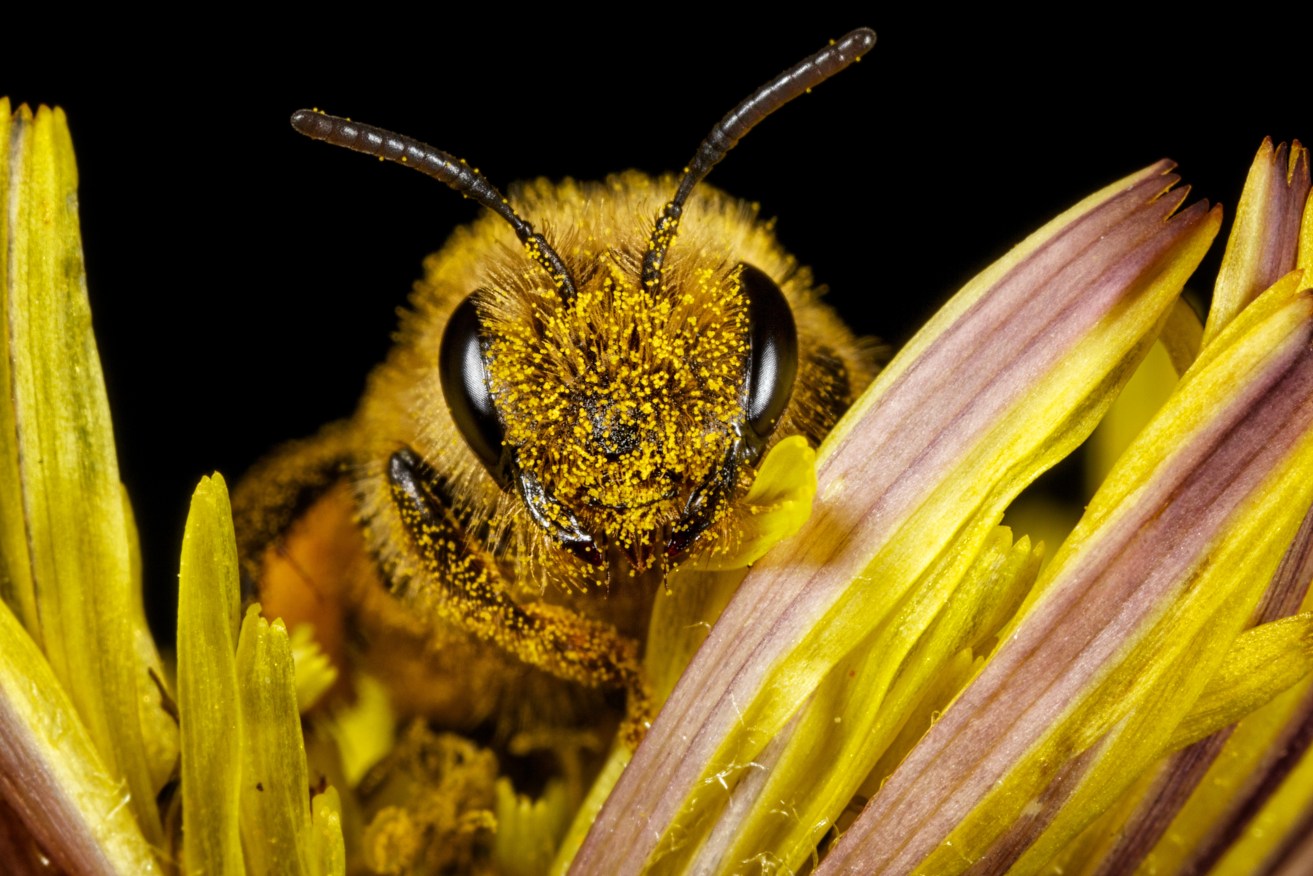Is this why bees buzz? When swarming they produce a storm-sized electric charge


The positive electric charge on a bee's body pulls on pollen like a magnet pulls on iron filings. Photo: Getty
When a bee zips around your garden, those little wings move at 230 beats per second.
Along the way, there are countless microscopic collisions with charged particles from dust and such.
These collisions strip away electrons from the bee’s fuzzy body, causing it to become positively charged with electricity.
Meanwhile, flowers are earthed but tier petals are negatively charged.
Hence, while bees appear to face-plant into pollen, their hairy bodies attract pollen as a magnet attracts iron filings.
This has been known for about 50 years.
About a dozen years ago, it was found that bees can recognise and interpret the electrical field that surrounds flowers.
From this, they can tell if that flower has been visited and denuded of pollen by another bee.
All of this electrical activity happens at an admittedly small scale. But what happens when there is a swarm of positively charged bees?
A cloud-sized zap
In a shocking new study, UK scientists have measured the electrical fields near swarming bees and discovered they can produce “as much atmospheric electric charge as a thunderstorm cloud”.
This type of electricity helps shape weather events, including the formation of clouds.
This phenomena isn’t confined to bees. The researchers say it also aids insects in finding food, and explains how spiders are lifted into the air in order to travel long distances.
“We always looked at how physics influenced biology, but at some point, we realised that biology might also be influencing physics,” said first author Dr Ellard Hunting, a biologist at the University of Bristol.
Changing the atmosphere
The researchers found that honeybee hive swarms change the atmospheric electricity by 100 to 1000 volts per metre, “increasing the electric field force normally experienced at ground level”.
From this discovery, the team has developed a model that can predict the influence of other species of insects.
“How insect swarms influence atmospheric electricity depends on their density and size,” said co-author Dr Liam O’Reilly, a postdoctoral researcher investigating electric ecology at the University of Bristol.
Locusts, for example, are much larger than bees and swarm on a biblical scale, and their influence on the atmosphere “is likely much greater than honeybees”.
This is all new, but it raises an obvious question: If the electrical charge of insects has a collective influence on the weather, what is their impact on climate?
And what kind of impact comes from insects so rapidly declining?








